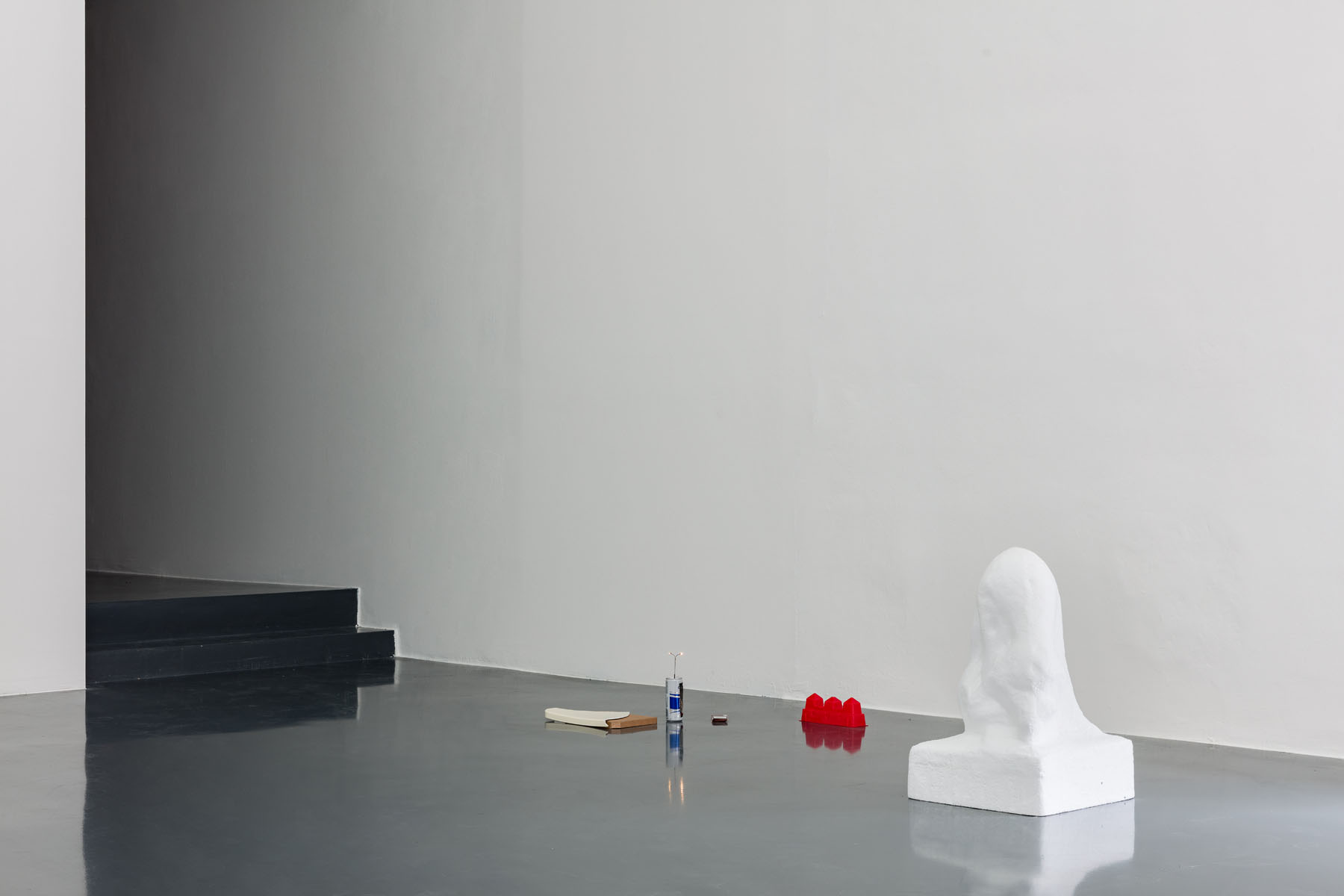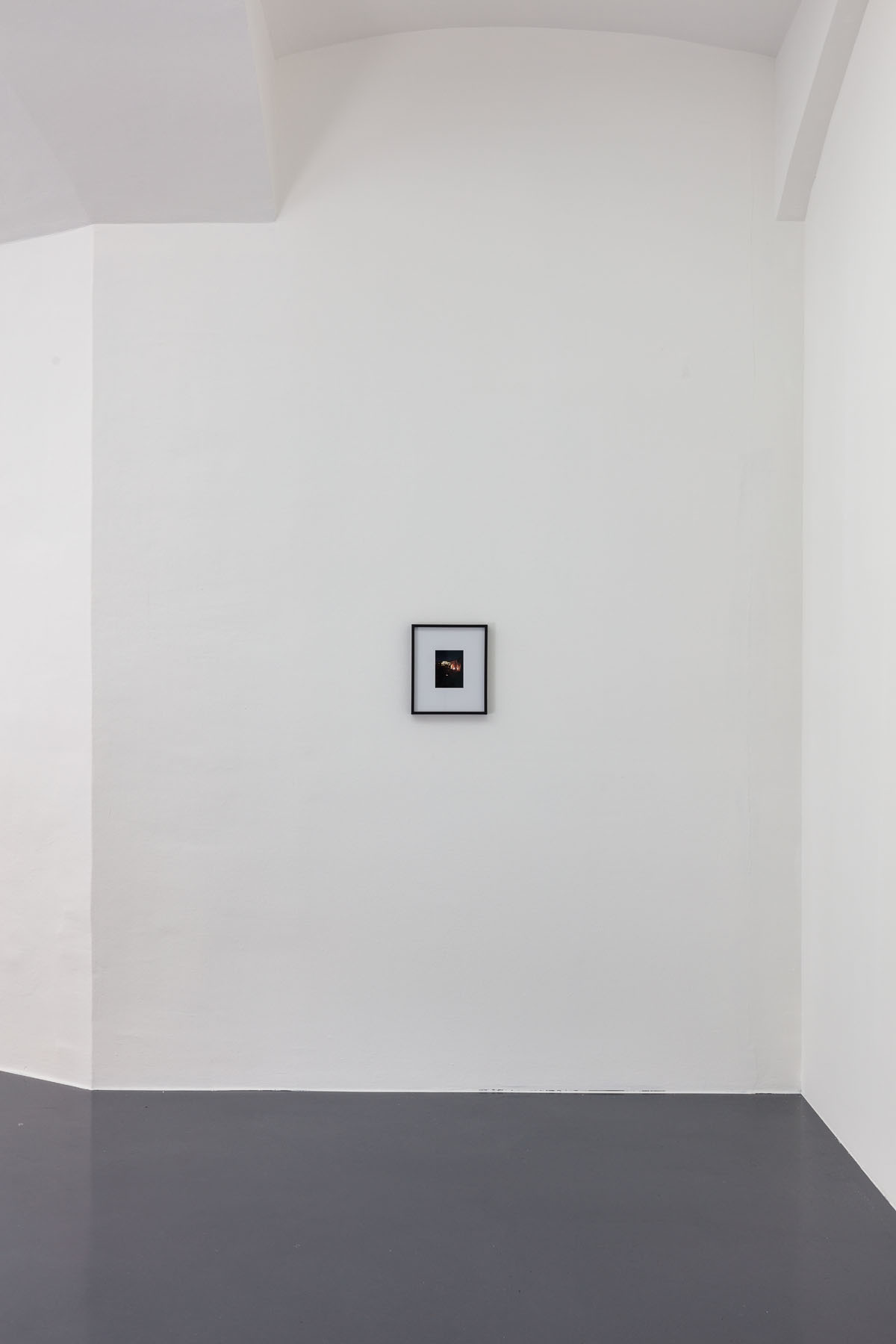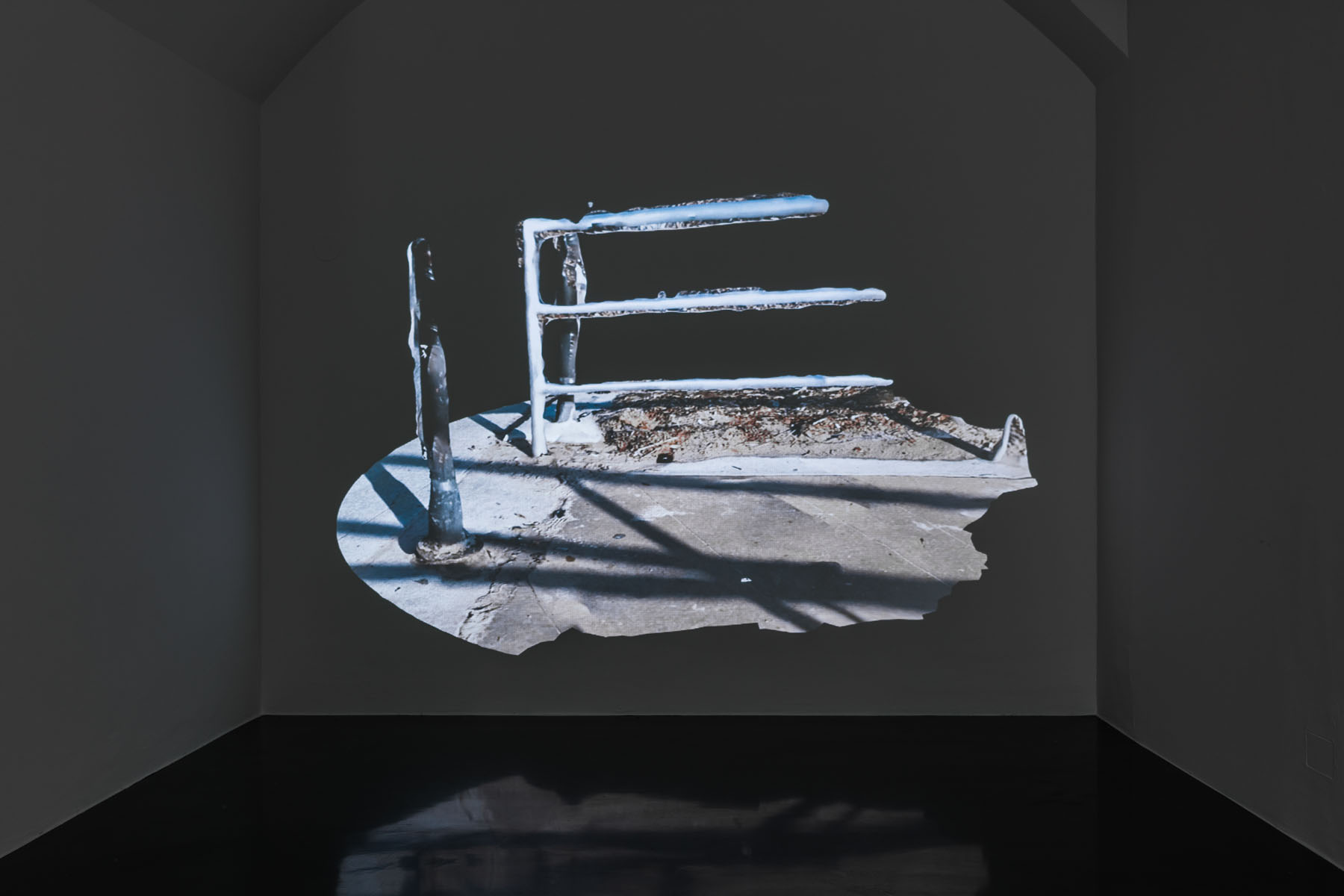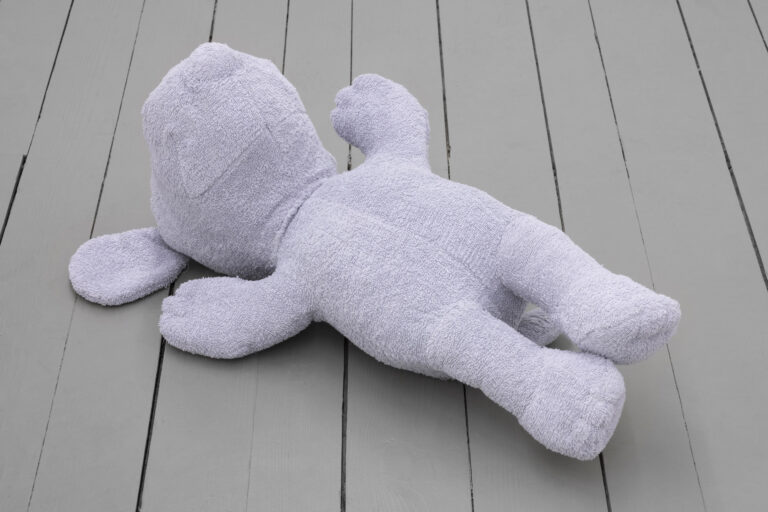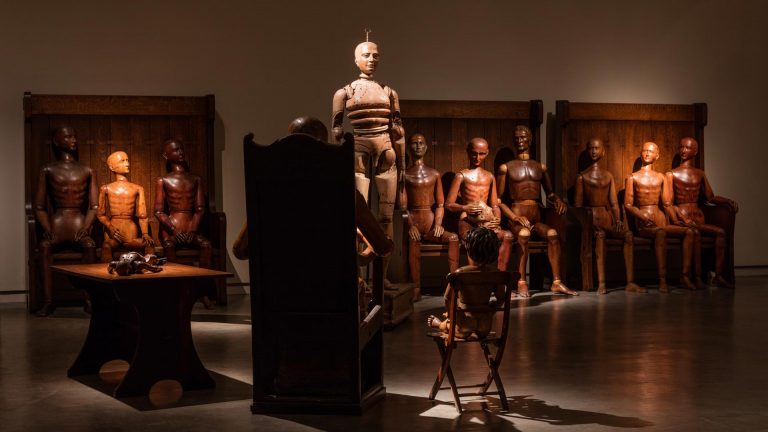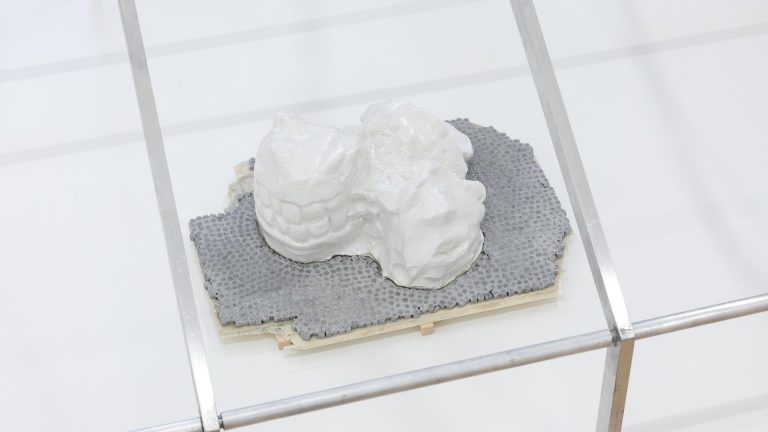Artist: Benjamin Hirte
Exhibition title: First Houses
Venue: Galerie Emanuel Layr, Vienna, Austria
Date: May 20 – July 31, 2020
Photography: kunst-dokumentation.com / all images copyright and courtesy of the artist and Galerie Emanuel Layr, Vienna/Rome
It was a big year for New York’s Lower East Side. Not only did the neighborhood witness the construction of First Houses in 1936, the frst public housing units ever built in the United States. Moreover, the very same New Deal policies which realized public housing also funded the building of Hamilton Fish Park Pool, a new public pool within walking distance of where the Black, Hispanic and Asian community was now supposed to take shelter. Amenities such as a high-tech fltering system, under-water lighting, blue glazed terra cotta, scum gutters, a bathhouse with a capacity of 2,200 people, an Olympic-sized main pool and two adjacent diving and wading tanks composed what was in 1936 a rather fancy recreational facility. In fact, in its initial form arranged in a semicircle, the three pools created something like an air of inclusion, even if only half-way.
This was, however, only the third stage of the government implementing measure to ameliorate the poor living conditions of the working-class neighborhood. In a way, it all started in 1900 when the architecture frm Carrère and Hastings were commissioned to develop a recreational area of what was back then the degree zero of the Jewish, Irish and Polish immigrant community in New York. The architects who had just won the competition for the main branch of the New York Public Library with their idea to build the largest marble structure in North America, turned, as it was usual in the American aristocracy, towards Paris. Inspired by the recently built Petit Palais and its “power to educate the mind while it pleases the senses,” as one contemporary noted, they conceived the area as a square for the faneur, flled with benches presumably to read on, patches of grass not to be used, and a Beaux Arts style gymnasium. But there was going to be friction in the import of Parisian modernity; the two Francophiles had simply underestimated their addressee. Within a year, the formal pathways and grass grounds on which the stroller was supposed to circulate were destroyed. Realizing the need to adjust Carrère and Hastings’ bourgeois hallucinations, the city authorities succumbed to the demands of Lower East Side’s community and re-opened the park two years later, now with basketball courts, running tracks and tennis courts. By the time Hamilton Fish Park Pool would be inaugurated on that same square three decades later, it was only the Beaux-Arts style gymnasium remaining, now something of a symbol of the failed attempt to equate immigrant workers with drifting faneurs.
There is a sense of this negotiation between hallucinated audience and real addressee, of misguided imports and failed promises in the video First Houses (2020). In silently assembling the destitute residues of the post-New Deal public infrastructures, these trash cans, public sculptures, gates, benches, gullies, playgrounds, fences, water hydrants, and doors, however, the video begs the question of encasing these conficts into a narrative order. As the grand form of struggle and demise, the melodrama appears to be most accurate: Labor versus wealth, redistribution versus inheritance, the architectural objects would be enlisted as silent actors brawling along the well-known lines dividing social democracies.
And it is true, these architectural objects index the social democratic confguration which constructed these invisible infrastructures in the frst place: the Keynesian consensus between labor and capital, the bipartisan support of the welfare state, the four-decades of steadily declining inequality and social immobility. That is to say, what we get to see in First Houses is also what many of these objects have witnessed over time. By the time the Lower East Side “had become a congregating spot for drug dealers,” as the Times reported in 1984 of Hamilton Fish Park Pool, New York’s infamous 1975 fscal crisis had shifted the power dynamics decisively, giving the melodramatic tale its necessary spin towards demise: Debt was successfully weaponized to foster privatization and the dismantling of the welfare state, providing the frst stages of a narrative we are all too familiar with. In fact, there is a feeling First Houses relays the immense distance separating us from a blossoming social democracy not yet cornered by the conservative counter-revolution of the 1980s and its pioneering of austerity politics.
That there is an exhaustion to this social democratic melodrama – partially invoked by the sheer repetition of its playbook – is made clear most poignantly by the introduction of a new actor, the Fountain for Erdbergstraße (2020): Based on a hippo sculpture, that is part of a social housing project (Gemeindebau) in Vienna’s third district, and the ubiquitous civic fountain, it reassembles two divergent realities of public sculpture by transfguring them into one sutureless unit. In doing so, Fountain for Erdbergstraße simultaneously approximates and distances itself from the scanned architectural objects in the Lower East Side which fulflled the same cynical function as Hamilton Fish Park Pool and public housing projects such as First Houses: To control movement, containing the circulation of the working-class community so they wouldn’t use the public amenities intended for their wealthier white counterparts. In a way, Fountain for Erdbergstraße counters these architectural inscriptions of inequality by way of fgurative and functional ambiguity: Where does the hippo’s torso end and the throat begin? Is it supposed to source water like a fountain or channel it like a drain or contain it like a basin? Maybe it suggests that water, just like power, prefers to trickle down. How and where it is distributed, however, remains part of the confict to recompose our public infrastructures.
-Pujan Karambeigi
Benjamin Hirte, First Houses, 2020, Installation view, Galerie Emanuel Layr Vienna
Benjamin Hirte, First Houses, 2020, Installation view, Galerie Emanuel Layr Vienna
Benjamin Hirte, Fountain for Erdbergstraße / Brunnen für die Erdbergstraße, 2020, red sandstone, timbers, 75 x 80 x 65 cm
Benjamin Hirte, Fountain for Erdbergstraße / Brunnen für die Erdbergstraße, 2020, red sandstone, timbers, 75 x 80 x 65 cm
Benjamin Hirte, First Houses, 2020, Installation view, Galerie Emanuel Layr Vienna
Benjamin Hirte, Intricate Greyhound, 2020, polystyrene, CNC milled, approx. 60 x 40 x 40 cm
Benjamin Hirte, Intricate Greyhound, 2020, polystyrene, CNC milled, approx. 60 x 40 x 40 cm
Benjamin Hirte, Für Ihre Lieben / For Your Loved Ones, 2020, various materials, beverage can, model building street lamp, toy castle, cigarette box, part of a chair, cardboard box, dimensions variable
Benjamin Hirte, First Houses, 2020, Installation view, Galerie Emanuel Layr Vienna
Benjamin Hirte, First Houses, 2020, Installation view, Galerie Emanuel Layr Vienna
Benjamin Hirte, BBQ on Broome Street, 2020, lambda print, framed, 32 x 27 cm (framed dimensions)
Benjamin Hirte, BBQ on Broome Street, 2020, lambda print, framed, 32 x 27 cm (framed dimensions)
Benjamin Hirte, First Houses, 2020, Installation view, Galerie Emanuel Layr Vienna
Benjamin Hirte, First Houses, 2020, video projection, 27:00 min
Benjamin Hirte, First Houses, 2020, video projection, 27:00 min
Benjamin Hirte, First Houses, 2020, video projection, 27:00 min
Benjamin Hirte, First Houses, 2020, video projection, 27:00 min
Benjamin Hirte, First Houses, 2020, video, 27:00 min
Benjamin Hirte, First Houses, 2020, Installation view, Galerie Emanuel Layr Vienna
Benjamin Hirte, First Houses, 2020, Installation view, Galerie Emanuel Layr Vienna
Benjamin Hirte, First Houses, 2020, Installation view, Galerie Emanuel Layr Vienna
Benjamin Hirte, Fountain for Erdbergstraße / Brunnen für die Erdbergstraße, 2020, red sandstone, timbers, 75 x 80 x 65 cm





